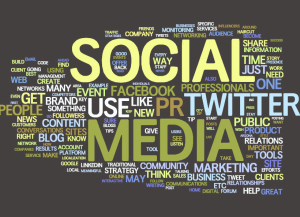 Every Thursday, I will republish my best articles from Technorati.com. Since Technorati redesigned its website and is under new managements, tens of thousands of articles that were previously published on the site are no longer available. I have been given explicit permission to republish my work on my own website.
A new survey from email marketing software firm VerticalResponse found that 43% of small businesses (100 employees or less) spend at least six hours a week on social media, with seven percent spending over 21 hours a week on Facebook, Twitter, and such. The survey also found that two-thirds of small businesses are spending more time on social media than they did a year ago, suggesting that more small businesses are either realizing or actually seeing the benefits of social media marketing.
Every Thursday, I will republish my best articles from Technorati.com. Since Technorati redesigned its website and is under new managements, tens of thousands of articles that were previously published on the site are no longer available. I have been given explicit permission to republish my work on my own website.
A new survey from email marketing software firm VerticalResponse found that 43% of small businesses (100 employees or less) spend at least six hours a week on social media, with seven percent spending over 21 hours a week on Facebook, Twitter, and such. The survey also found that two-thirds of small businesses are spending more time on social media than they did a year ago, suggesting that more small businesses are either realizing or actually seeing the benefits of social media marketing.
Facebook and Twitter are still the most popular networks that small businesses are using, coming in at 90% and 70% respectively. Although LinkedIn, Google+, and Pinterest are touted as must-use networks in social media marketing, a majority of small businesses, according to the survey, don't use these sites at all. Of all the things small businesses could do on social media, it turns out that finding and posting content takes the most time, followed by learning and education (presumably this means learning how to use the social network, the survey isn't clear) and analyzing efforts. The least time consuming task was responding to questions.
Six hours a week is a lot, and many small businesses are struggling with the work load and the time it takes to manage multiple networks. The survey doesn't say a whole lot on how small businesses spend these six, eight, 12 hours a week, but there are good ways to spend that time. If you're spending this much time on social media, and want to be assured that you time is well spend, then here are the things that small businesses ought to be doing:
- Responding to Questions - This is a must, especially since there are much larger companies who ignore, and even delete, questions and responses from fans on Facebook and other networks. It's a little worrisome that small businesses spend the least amount of time on this, as it means that either there aren't questions to respond too, or questions are going unanswered for too long. If there's any engagement from fans or potential customers on social media, then always make them a top priority.
- Building Relationships - Surprised this wasn't on there, which means it either wasn't asked, or small businesses are treating social media too much like another avenue to push a marketing message. Think of the 50/50 rule when it comes to sharing content: 50% your content, and 50% other people's content. Yes, other people's. Retweeting, repinning, and resharing other people's stuff helps them as well as you. You provide more value to your own followers while making a connection with the person who's content you are sharing. Make sure social media is used to participate in a conversation, not just to take one over or to start one. It shows that you are listening.
- Analyzing Efforts - This is also a must, but analyzing your social media marketing efforts is much more than counting fans and mentions and comments. Actually, those numbers don't mean all that much. What really counts, when analyzing your social media marketing, is how much traffic social media drives to your site, how many leads are coming from social media, and how many of those leads you're turning into customers. After all, those are the things that keep businesses going. If anything, small businesses need to be measuring their success on social media. If not, there's no way to know if you're wasting your time.
- Defining Goals - Small businesses need to spend time figuring out what they want out of social media in the first place. These goals need to line up with the core needs of the business, and need to be more specific than "increased brand awareness" or "increased customer engagement." What's a good goal for social media? Something specific, and targeted toward the needs of the business, like "have 10% of our leads come from social media" or "have 100 people sign up for our webinar" or "get 50 more subscribers for our blog by the end of the month."





 Technorati Media recently came out with its
Technorati Media recently came out with its 

 Article first published as
Article first published as  I just had a client tell me that blogging "won't provide much SEO." That statement is so misguided, that I had to stop my playing Words with Friends and write a response pronto. There's no way I could have a content marketing client who is so misinformed.
Blogging and SEO go hand in hand. In fact, I'd say that business blogging is SEO, because what SEO do you have without business blogging?
I just had a client tell me that blogging "won't provide much SEO." That statement is so misguided, that I had to stop my playing Words with Friends and write a response pronto. There's no way I could have a content marketing client who is so misinformed.
Blogging and SEO go hand in hand. In fact, I'd say that business blogging is SEO, because what SEO do you have without business blogging?  Business blogging is hard work. Plain and simple. Shani Higgins, CEO of Technorati, continues her interview with Jeff Reine, general manager of Typepad. In this interview about the trends in business blogging, they discuss the tools that can propel a blog forward and help to reward that hard work. Key takeaways from this interview, which can be watched below, include:
Business blogging is hard work. Plain and simple. Shani Higgins, CEO of Technorati, continues her interview with Jeff Reine, general manager of Typepad. In this interview about the trends in business blogging, they discuss the tools that can propel a blog forward and help to reward that hard work. Key takeaways from this interview, which can be watched below, include: